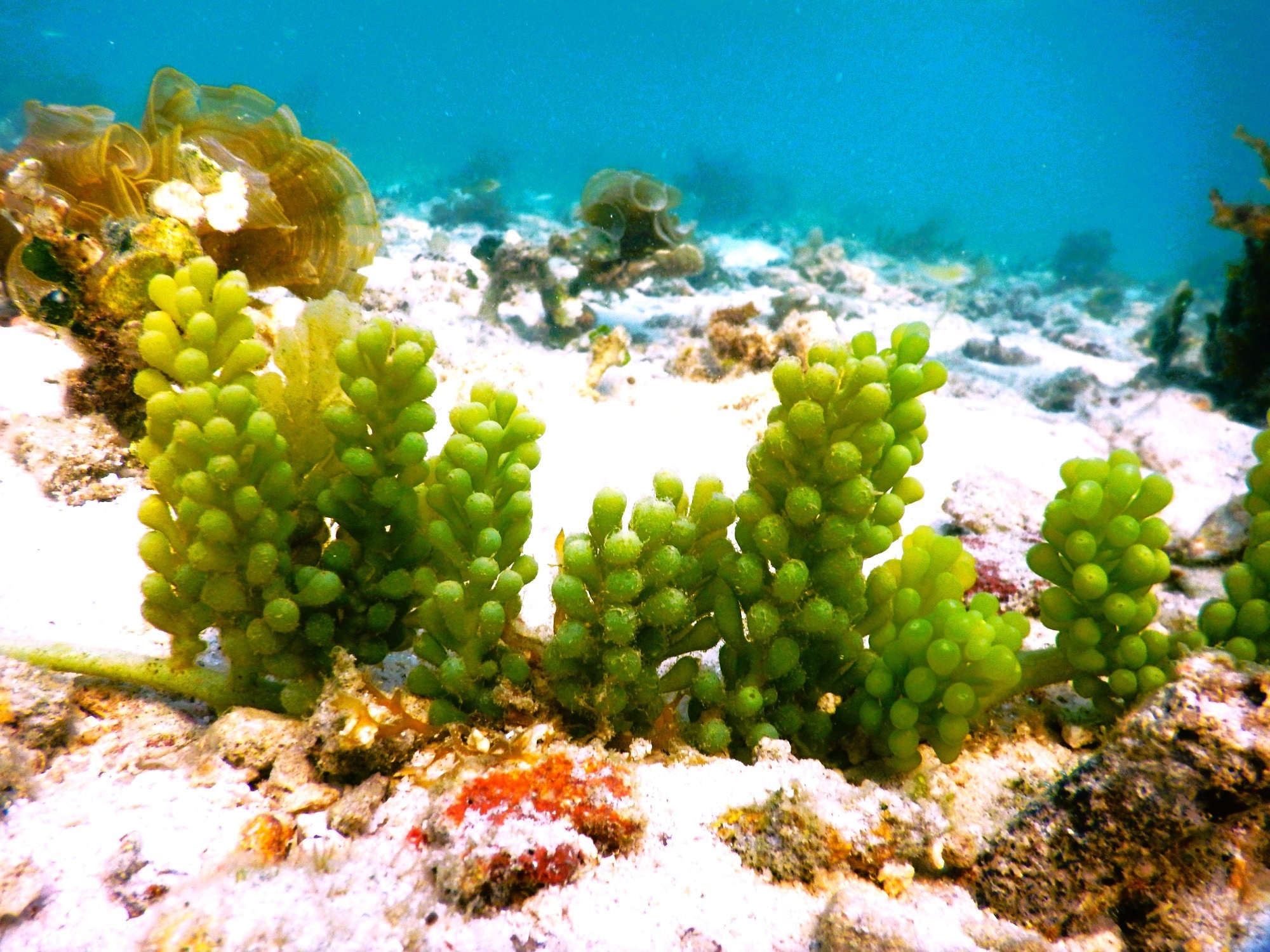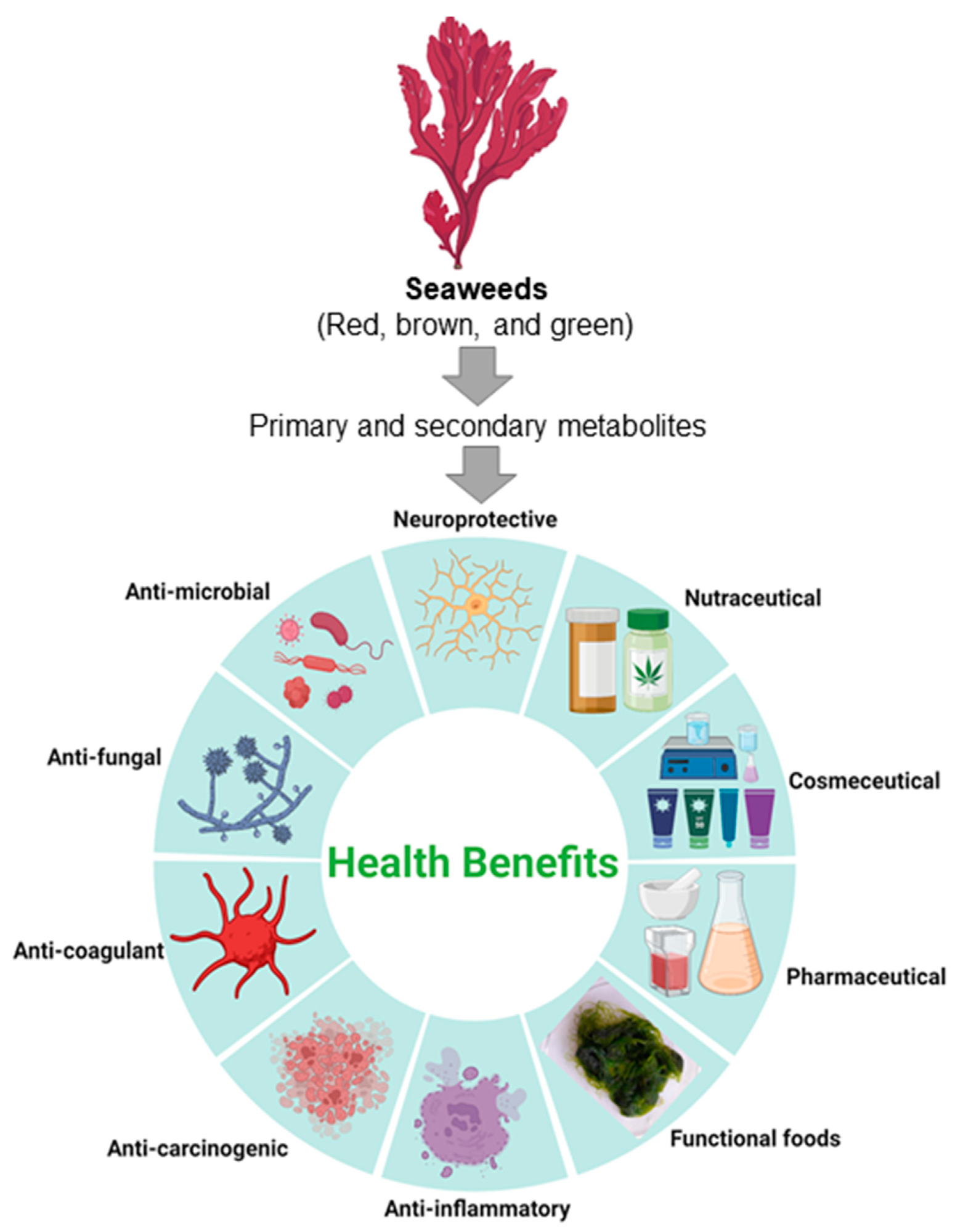In a recent review published in the journal Foods, a group of researchers provided a consolidated overview of seaweeds' nutritional and medicinal values, exploring their potential applications in food, nutraceuticals, and pharmaceuticals. They also discussed the challenges and opportunities in advancing seaweed-derived products and their industrial incorporation.
 Review: Rehashing Our Insight of Seaweeds as a Potential Source of Foods, Nutraceuticals, and Pharmaceutical. Image Credit: Ties Moel / Shutterstock
Review: Rehashing Our Insight of Seaweeds as a Potential Source of Foods, Nutraceuticals, and Pharmaceutical. Image Credit: Ties Moel / Shutterstock
Background
Seaweeds, utilized since ancient times and critical for producing essential hydrocolloids, offer diverse bio-prospecting opportunities and meet rising global demands due to their unique qualities and chemical compositions. Categorized into Chlorophyta, Rhodophyta, and Phaeophyta, they play a significant role in sustainable solutions across sectors. To fully utilize their bioactive compounds, further research is needed to optimize extraction and refinement processes.
Nutritional and metabolic wealth of seaweeds
As the quest for functional foods escalates amidst population boom and escalating health risks, seaweeds surface as a potent solution, owing to their plethora of bioactive compounds and nutraceutical potential. Historically consumed in East Asia, they are nutritional powerhouses, replete with essential minerals, vitamins, proteins, and carbohydrates, developed as a result of their resilience to unique environmental conditions.
Labeled as superfoods, seaweeds exhibit exceptional mineral content, surpassing terrestrial plants and catering to human mineral deficiencies. Their minerals, a treasure influenced by species, geographic, and environmental variables, are absorbed from seawater. However, careful consumption is vital due to the presence of potentially harmful minerals.
Seaweeds are abundant in nutrients and energy-efficient, lacking conventional plant structures, rendering them a dietary staple in places like Japan. They are enriched with essential fatty acids, various vitamins, and crucial minerals like magnesium, calcium, and iodine. The diverse nutritional values of seaweeds highlight their role in enhancing diets and rectifying nutritional deficiencies, advocating for their integration into different cuisines and more research into their nutritional merits. Comprising about 50% polysaccharides, seaweeds are significant in the food and pharmaceutical industries owing to their multifunctional properties like solubility in water and biodegradability and their roles in food packaging, showcasing inherent antibacterial and antioxidant properties.
 A schematic illustration of seaweed primary and secondary metabolites and their possible application as bioactive compounds and functional foods with the desired benefits.
A schematic illustration of seaweed primary and secondary metabolites and their possible application as bioactive compounds and functional foods with the desired benefits.
Specialized seaweed components and their applications
Fucoidans
Found primarily in brown seaweeds, fucoidans are sulfated polysaccharides with a myriad of biological properties suitable for pharmaceutical applications, showcasing immunomodulatory, anti-tumor, anti-inflammatory, and anticoagulant properties. Fucoidans' structure varies with species and environmental conditions, is crucial for its functions.
Carrageenans and Agars
Carrageenans and Agarans, crucial components of red seaweed, are integral in food, medicine, and cosmetics due to their low toxicity, biocompatibility, and biodegradability. They serve as gelling and stabilizing agents, displaying varied biological activities significant to human health. Derived primarily from Kappaphycus alvarezii, carrageenans exhibit potential health benefits like anti-obesity, antioxidant, antibacterial, anticancer, and neuroprotective properties, subject to the seaweed's life-cycle and extraction process. Their diverse structures and impacts emphasize the need for continued research to explore their full spectrum of applications and benefits.
Ulvan
Ulvan, constituting 9 to 36% of Ulva's biomass, mainly comprises sulfated rhamnose, uronic acids, and xylose. It has diverse structural components, each with its specific properties. Advanced extraction and purification techniques are crucial for determining the yield and quality of Ulvan.
Pigment composition and industrial applications of seaweeds
Diverse seaweed pigments, including chlorophyll and carotenoids, are crucial for industries like food, cosmetics, pharmaceuticals, and animal feed due to their unique properties, contributing to antioxidant and anticancer activities. The synthesis of these varied pigments highlights their industrial importance and potential in developing innovative applications across different sectors.
Nutritional and medicinal values of seaweed pigments
Different pigments present are recognized for their role in human health. They exhibit antimicrobial activities, particularly against Gram-positive bacteria, and are crucial in countering diseases by showcasing higher antimicrobial activity, proving their significance in health-related applications.
Lipids and fatty acids composition
Seaweeds are also sources of essential fatty acids, especially polyunsaturated fatty acids (PUFAs), crucial in the human diet to combat diseases like diabetes and cancer. They serve as sustainable raw materials containing health-promoting fats beneficial for nutraceutical, cosmeceutical, and feed enrichment. The lipid content varies based on species and environmental conditions and is particularly rich in valuable PUFAs like docosahexaenoic acid (DHA), eicosapentaenoic acid (EPA), and arachidonic acid (AA).
Application in different industries
The diverse fatty acid composition in seaweeds, including high levels of ω-3 and ω-6 fatty acids, makes them an excellent prospect for various applications due to their antimicrobial, antioxidant, antifungal, antiproliferative, anti-parasitic, and anticancer activities. Their lipidic extracts offer antibacterial actions, nutritional values, and can be considered a viable source for upcoming biotechnological applications. They are known to contain compounds with the potential to fulfill current economic needs in the health and biotechnology sectors.
Valuable Secondary Metabolites in Seaweeds
Seaweeds are a treasure trove of secondary metabolites like alkaloids, glucosinolates, phenolic compounds, and terpenes that protect them from their harsh environment and oxidative stress. These metabolites have potential applications in various industries due to their antioxidant properties.
Phenolic compounds
Phenolic compounds, found predominantly in brown and green seaweeds, play significant roles, such as herbivore protection, cell wall hardening, and metal chelating. These metabolites, including flavonoids, tannins, chalcones, and coumarins, are recognized for their antioxidant properties, offering numerous health benefits and presenting potential pharmaceutical applications. Phlorotannins, a type of polyphenol, have garnered attention due to their high antioxidant activity, surpassing that of tocopherol and ascorbic acid. These polyphenolics have various potential applications across nutraceutical, agricultural, pharmaceutical, and cosmetic industries.
Terpenes
Terpenes are another group of non-polar secondary metabolites found in seaweeds, with brown seaweeds being rich sources. They have diverse structures and are classified into different classes based on isoprene units, with each class displaying a range of bioactivities beneficial for health. Monoterpenes are commonly found in red seaweeds, exhibiting unique properties, with some, like sesquiterpene elatol, offering protection against herbivory and fouling.
Biological significance of seaweeds
Neuroprotective properties of seaweeds
Seaweeds, diverse in species, show promise as natural neuroprotective agents against neurodegenerative diseases. Despite the prevalence of synthetic agents, their significant side effects highlight the importance of safe and effective seaweed extracts. Compounds like fucoxanthin demonstrate neuroprotective activities, combating oxidative stress and neuroinflammation. However, translating these findings into effective drugs necessitates further research and more clinical trials.
Seaweeds and antiviral activities
Seaweeds have demonstrated antiviral properties against various viruses, including herpes simplex virus (HSV) and human immunodeficiency virus (HIV). Sulfated polysaccharides from seaweeds inhibit viruses like dengue and have also shown promise against Severe Acute Respiratory Syndrome Coronavirus 2 (SARS-CoV-2), indicating potential application against coronavirus disease 2019 (COVID-19). Studies have explored the antiviral efficacy of various seaweed species, and the results suggest a potential foundation for developing antiviral drugs. Some extracts' selectivity and inhibition values are notable, warranting further exploration.
Antifungal and anti-diabetic potential of seaweeds
Seaweeds possess antifungal and anti-diabetic properties, inhibiting fungal growth and enzymes causing hyperglycemia, improving diabetic symptoms in animal models, and inspiring medicines like Cadalmin Anti-diabetic Extract. However, extensive research and clinical trials are crucial for broader therapeutic application to confirm their efficacy and safety in diverse medical conditions.
Seaweeds in combating obesity
The anti-obesity potential of seaweeds is under extensive study, with several in-vitro and in-vivo models highlighting their ability to modulate body weight, lipid levels, and energy consumption. Some seaweed extracts have significantly reduced obesity markers and exhibited potential in managing obesity-related parameters by altering gene expression and inhibiting adipocyte differentiation. Although promising, extensive studies and clinical trials are needed to validate the efficacy of seaweeds as anti-obesity agents.
Anti-inflammatory activities of seaweeds
Seaweeds, abundant in compounds like polyphenols, display notable anti-inflammatory properties, downregulating pro-inflammatory cytokines and offering the potential to develop anti-inflammatory therapeutics. Compounds such as lectin inhibit inflammation, with their natural origin promising reduced side effects compared to synthetic alternatives, highlighting seaweed's therapeutic promise.